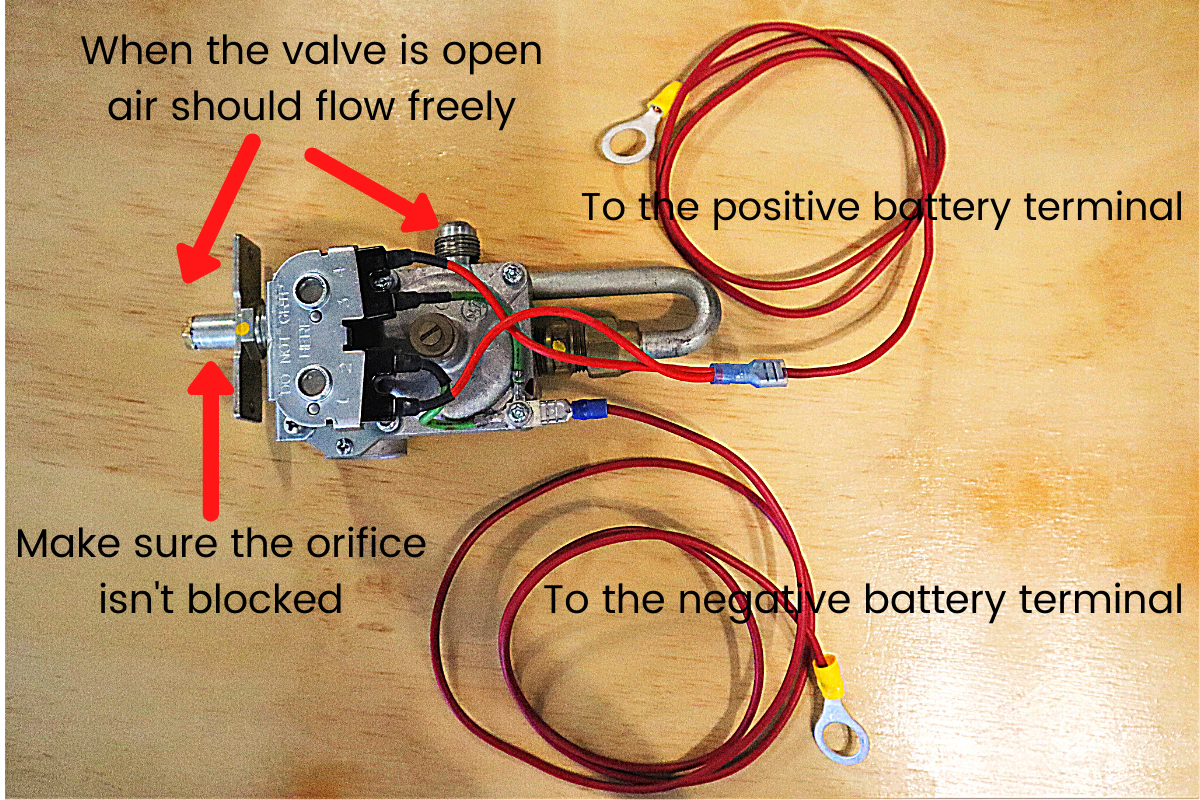
Is Your RV Furnace Blowing Cold Air? Here’s What To Do
RV furnaces can be problematic, and more often than not, it’s at a very inconvenient time.
Although pretty basic in operation, there are moving parts, electronics, gas fittings, and sensors needed for your furnace to start and produce warm air.
For the vast majority of us, the furnace only gets used for short periods of the year. The rest of the year, they collect dust and rattle around down bumpy roads. In some cases, they also become home to rodents in the off-season.
Keeping your RV furnace maintained and serviced is key, and will greatly reduce the chances of issues requiring repair.
Just like anything with moving parts, there will eventually be problems. This is especially true as we all know in the RV world.
There are numerous issues an RV furnace may present and a more in-depth look at troubleshooting can be found here: How Do You Repair An RV Furnace?
Let’s focus on an RV furnace blowing cold air.
Reasons Why Your RV Furnace May Be Blowing Cold Air
Before you can fix anything, you need to know what the problem is. As mentioned, your RV furnace requires fuel, electronics, and a series of sensors and relays to start, run, and produce heat.
Here are the most likely causes and fixes for an RV furnace blowing cold air.
Sail Switch
This is a very common issue with RV furnaces not fully igniting, and as a result, just blowing cold air.
The sail switch is a small, very sensitive switch that only opens when your furnace fan gets up to full speed. This switch can become blocked with pet fur, dust, and debris from the RV sitting, or from being collected and blown around by the fan itself.
A less common problem that may disguise itself as a sail switch problem is a fan motor not functioning at full speed. As mentioned, the sail switch will only open once the fan is at full speed.
Many RVers choose to have a spare sail switch as it is a common problem, and in most cases, a cheap and easy fix.
Fuel source
Let’s start with what should be an obvious one. Do you have gas? If there is no fuel when the gas valve opens, it will not ignite the furnace. Your fan will be running and blowing cold or room temperature air, but there is no flame heating the air.
First step, confirm you have propane. Second step, confirm the tank valve is open. This may seem obvious, but we all know how rushed we can get when setting up our site. There are lots of things going on and sometimes little things get overlooked.
Gas valve
When fuel is sent to the furnace, a gas valve opens and allows the gas to be ignited and continue to burn. If this gas valve doesn’t open, this can’t happen, and you have an RV furnace blowing cold air.
When the furnace is starting, you can listen and hear the gas valve open. It will make a clicking noise when it opens. If you hear this noise, it is likely opening.
A small orifice on the gas valve is a possible location of fuel blockage. The orifice end can be removed and checked for debris.
There is a chance of hearing the click when starting the furnace and still having a faulty valve. If this is the case, it will require removing the valve and testing it with a 12-volt power source.
Attach a lead to the two lines on the valve and the valve should open, and you will be able to blow air through the valve.
Check out this link for more detailed instruction on testing RV furnace components: How To Test RV Furnace Components.
Remember to shut off your gas before disconnecting any fuel lines!

Ignitor
When trying to start, your furnace should make a fast ticking sound. This sound is the spark at the ignitor inside the combustion chamber. The gas is delivered to the chamber and ignited by a spark. If you don’t hear this fast ticking, you will need to investigate further.
With the ignitor removed from the combustion chamber, but still connected to the furnace (make sure your gas is disconnected), you should see a spark jumping between the ignitor tips when the furnace is trying to start.
Visually inspect the ceramic insulation for cracks. Check that the manufacturer specified gap between ignitor tips is okay. Ensure that the gas chamber is in good condition with no large holes that would allow gas to escape before being ignited.
If there is no spark or a very weak spark, then the ignition module on the circuit board is the most likely source of the problem. This will require that the ignition module be replaced.
Testing your furnace before heading out for the weekend is a good way to catch a problem while you still have time to fix it and are close to parts if needed. Don’t get caught on a cold night this winter with your RV furnace blowing cold air.
Make sure you keep track of all your RV maintenance and repairs with an online tool such as RV LIFE Maintenance. Not only can you keep all of your documents in one place, but you’ll also receive timely reminders when maintenance is due to help you avoid costly repairs and potentially serious accidents.
Continue reading:



